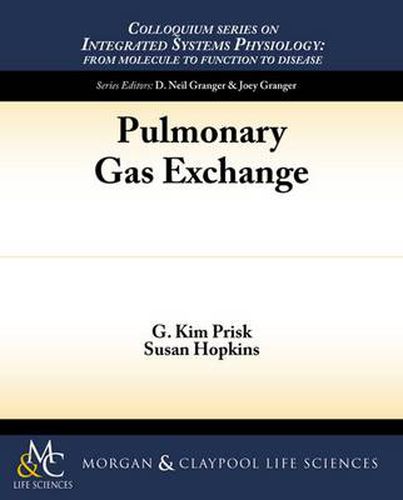Readings Newsletter
Become a Readings Member to make your shopping experience even easier.
Sign in or sign up for free!
You’re not far away from qualifying for FREE standard shipping within Australia
You’ve qualified for FREE standard shipping within Australia
The cart is loading…






The lung receives the entire cardiac output from the right heart and must load oxygen onto and unload carbon dioxide from perfusing blood in the correct amounts to meet the metabolic needs of the body. It does so through the process of passive diffusion. Effective diffusion is accomplished by intricate parallel structures of airways and blood vessels designed to bring ventilation and perfusion together in an appropriate ratio in the same place and at the same time. Gas exchange is determined by the ventilation-perfusion ratio in each of the gas exchange units of the lung. In the normal lung ventilation and perfusion are well matched, and the ventilation-perfusion ratio is remarkably uniform among lung units, such that the partial pressure of oxygen in the blood leaving the pulmonary capillaries is less than 10 Torr lower than that in the alveolar space. In disease, the disruption to ventilation-perfusion matching and to diffusional transport may result in inefficient gas exchange and arterial hypoxemia. This volume covers the basics of pulmonary gas exchange, providing a central understanding of the processes involved, the interactions between the components upon which gas exchange depends, and basic equations of the process.
$9.00 standard shipping within Australia
FREE standard shipping within Australia for orders over $100.00
Express & International shipping calculated at checkout
The lung receives the entire cardiac output from the right heart and must load oxygen onto and unload carbon dioxide from perfusing blood in the correct amounts to meet the metabolic needs of the body. It does so through the process of passive diffusion. Effective diffusion is accomplished by intricate parallel structures of airways and blood vessels designed to bring ventilation and perfusion together in an appropriate ratio in the same place and at the same time. Gas exchange is determined by the ventilation-perfusion ratio in each of the gas exchange units of the lung. In the normal lung ventilation and perfusion are well matched, and the ventilation-perfusion ratio is remarkably uniform among lung units, such that the partial pressure of oxygen in the blood leaving the pulmonary capillaries is less than 10 Torr lower than that in the alveolar space. In disease, the disruption to ventilation-perfusion matching and to diffusional transport may result in inefficient gas exchange and arterial hypoxemia. This volume covers the basics of pulmonary gas exchange, providing a central understanding of the processes involved, the interactions between the components upon which gas exchange depends, and basic equations of the process.